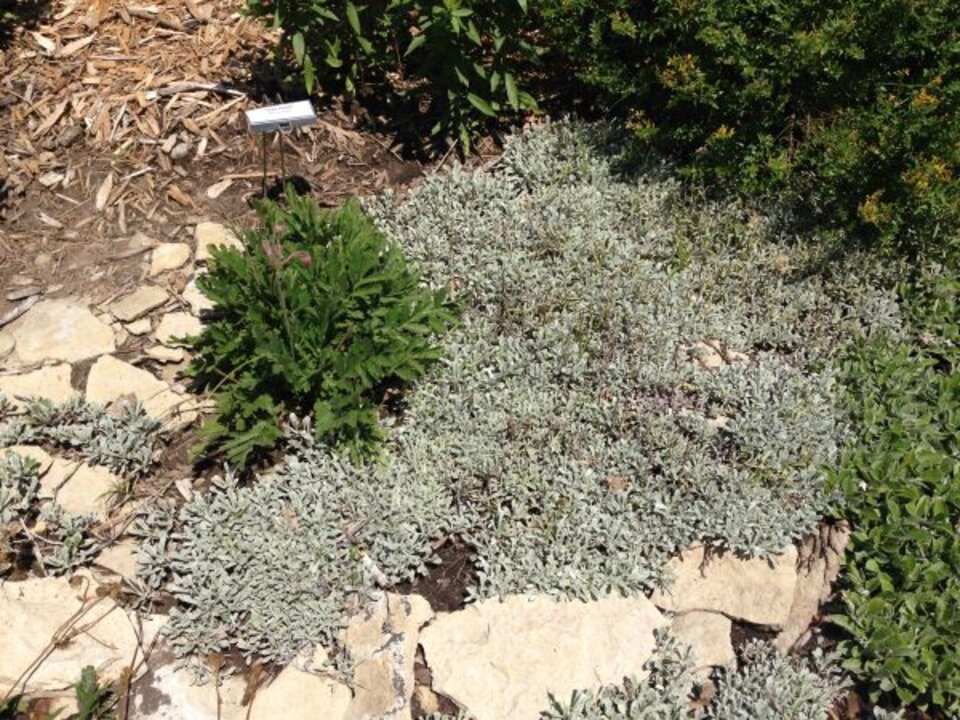Drought Tolerant Plants

With ongoing drought, conserving water in home, business and public landscapes is important. One way to conserve water is selecting drought tolerant plants. As a rule, a drought tolerant plant is one that can survive on average rainfall with little or no supplemental water once established.
Drought tolerant plants tend to have characteristics that minimize water loss from leaves and/or maximize water uptake by roots. These characteristics include deep roots; gray leaf color; small, succulent, hairy, or waxy leaves; or the ability to go dormant during drought.
Deep rooted plants take advantage of moisture deeper in the soil profile to avoid drought stress longer. Root depth is genetically determined but plants will only develop deeper roots if moisture if available in the rooting zone during establishment.
Roots will not grow deeper in search of water. This is a misconception. Roots only grow where there is moisture and oxygen available in soil. To promote deeper plant roots, water during establishment to suggested depths. For trees and shrubs, this is about 18 inches; 8 inches for herbaceous perennials, and 6 inches for turfgrass. Watering deeper can be a waste of water.
Plants with smaller leaves or leaves that are gray in color, hairy, waxy or succulent lose less moisture from their leaves through transpiration. Large leaves and lush growing foliage promoted by excess nitrogen lose moisture faster, making them less tolerant of dry conditions.
Not all plants have the ability to go dormant during drought. The most common plant in Nebraska landscapes that can go dormant is Kentucky bluegrass. Unfortunately, most people prefer not to have a brown, dormant lawn during summer. To prevent bluegrass going dormant, frequent irrigation is often needed.
For this reason, turf-type tall fescue is a better choice for less water use. While it does not have the ability to go dormant during drought, it has a deeper root system and can go longer between irrigation. Buffalograss is the most water conserving turfgrass we can plant in Nebraska.
As a rule, native plants are considered more drought tolerant than non-native plants. While this is not always true, native plants are often more adapted to or tolerant of local growing conditions and this can help with water conservation.
Keep in mind drought tolerant plants perform best once they have well-established root systems. It is important to provide new plants with adequate moisture until they establish roots. This may take one to three years.
Drought tolerant plants perform best when planted in soil with good structure, such as one with adequate organic matter. On soil tests, this would be 4 to 6 percent. It is important to manage soil health. Incorporate organic matter like compost; prevent soil compaction; and avoid excessive tillage and overwatering.
A drought tolerant plant performs best when planted in a location that has the growing environment that meets the plant’s needs, such as light exposure and soil type. If a drought tolerant shade-loving plant is planted in full sun, it is not likely to perform as expected. Know plant requirements before buying and siting them.
For some lists of drought tolerant plants for Nebraska, check out these resources:
“Perennials in Waterwise Landscape” https://extensionpubs.unl.edu/publication/9000016367249/perennials-in-water-wise-landscapes/ Drought tolerant trees for Eastern Nebraska: https://plantnebraska.org/file_download/inline/afcd1ad4-919f-4ad3-8c17-802fcdb0a652
Shrubs for Nebraska: https://plantnebraska.org/file_download/inline/75812e8d-b375-4252-ba09-7e505cbdcfc5
This article was reviewed by Nicole Stoner